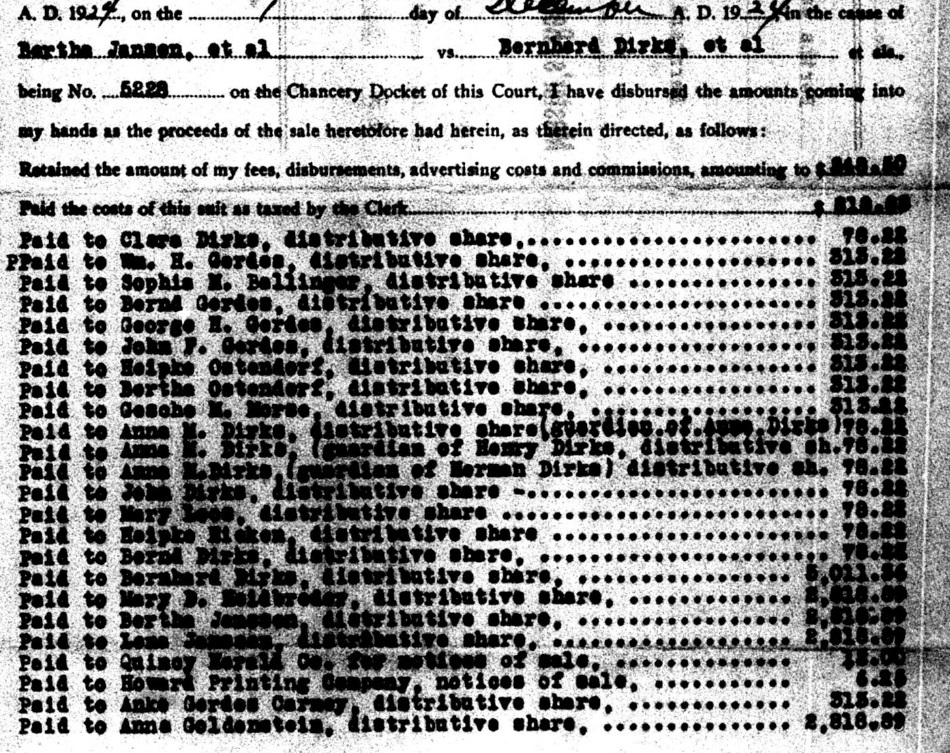Typed documents can sometimes be just as difficult to read as handwritten ones. This 1924 disbursement was made as the result of a court case over the estate of Heipke Dirks of Coatsburg, Illinois. The digital image used as the illustration in this post was made at the Family History Library from a microfilmed copy of the Adams County, Illinois, court case files. It took a little doing to transcribe the names, but I was helped by the fact that I already knew most of them and was familiar with first names commonly used in this family.
In the interest of room, we’ve omitted some of the information from the list.

Disbursement report filed December 1924, in case of Bertha Janssen, etal. versus Bernhard Dirks, etal., Adams County, Illinois, Circuit Court Case Files, Case 5228. Digital image made from the microfilmed copy of these case files at the Family History Library.
- Clara Dirks, distributive share
- H. Gerdes, distributive share
- Sophia M. Bollinger, distributive share
- Bernd Gerdes, distributive share
- George H. Gerdes, distributive share
- John F. Ferdes, distributive share
- Heipke Ostendorf, distributive share
- Bertha Ostendorf, distributive share
- Gesche M. Morse, distributive share
- Anna M. Dirks, distributive share (guardian of Anna Dirks)
- Anna M. Dirks, (guardian of Henry Dirks), distributive share
- Anna M. Dirks, (guardian of Herman Dirks), distributive share
- John Dirks, distributive share
- Mary Loos, distributive share
- Heipke Eicken, distributive share
- Bernhard Dirks, distributive share
- Mary D. Heidbreder, distributive share
- Bertha Janssen, distributive share
- Lena Janssen, distributive share
- Quincy Herald Co. for notices of sale
- Howard Printing Company, notices of sale
- Anke Gerdes Carmay, distributive share
- Anna Goldenstein, distributive share
The illustration serves as a good reminder that any indexing system that “automatically reads” typed text will have difficulty in some cases. The record that was microfilmed may have been difficult to read to begin with (it may have even been a carbon copy or made on a typewriter of questionable quality).
The image serves to illustrate the importance of including adequate “how I got it and made it” information in the citation. While our citation does not fit the form of those suggested in Evidence Explained, it does contain the essential information. That information tells me that it may be possible to get a better copy using the original record as this image was made from a Family History Library microfilm copy of the record. If I just use “Disbursement report filed December 1924, in case of Bertha Janssen, etal. versus Bernhard Dirks, etal., Adams County, Illinois, Circuit Court Case Files, Case 5228” as my citation information, I do not know where I saw the record and that would not help me later if I wanted to see if I could get a better copy. That type of citation does not tell me what “image” of the record was used to make my image.
And that is something that I need.
Kat says:
I’ve done a good bit of record transcriptions. When I got into the later records that were typed, I thought it would be a breeze — not so! Typos and worn ribbons producing faint letters were just as difficult to transcribe as the hand written ones.